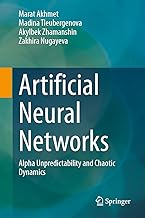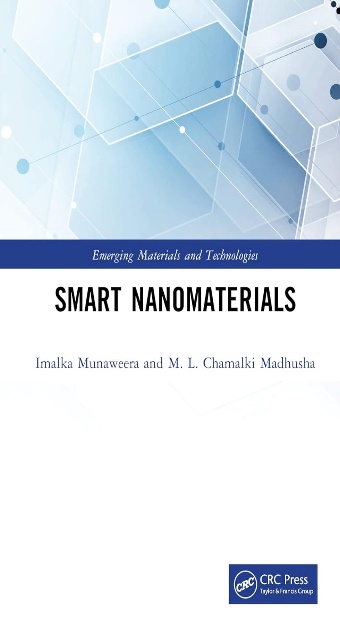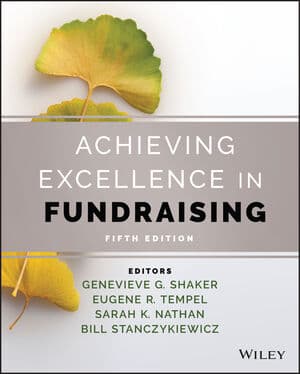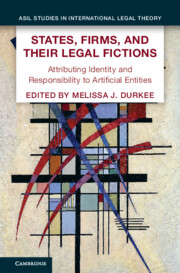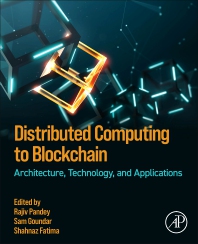
Book
Distributed Computing to Blockchain
ISBN : 9780323961462
Author : Rajiv Pandey
Publisher : Academic Press
Year : 2023
Language : English
Type : Book
Description : Table of contents Cover image Title page Table of Contents Copyright Contributors Preface Section A: Evolution of Distributed Systems Section B: Blockchain Architecture and Security Section C: Distributed Computing Acknowledgments Section A: Evolution of distributed systems Chapter 1: Decentralized web, distributed ledgers, and build-up to blockchain Abstract 1: Introduction 2: Distributed ledgers (DLTs) 3: Blockchains 4: Types of blockchains 5: Blockchain use cases 6: Limitations and challenges 7: Conclusion References Chapter 2: Decentralized everything: Practical use of blockchain technology in future applications Abstract Competing interests 1: Introduction 2: Related work 3: Motivation 4: Connecting the world together 5: Services provided to end users—Application wise 6: Blockchain technology use cases and a way forward 7: Challenges in Blockchain technology 8: Future applications with Blockchain technology 9: Problems faced in (by) decentralizing applications 10: Future research directions/a way forward towards decentralized applications 11: Conclusion Appendix References Chapter 3: Distributed computing to blockchain: Architecture, technology, and applications Abstract Acknowledgment 1: Introduction 2: Recent related works 3: Security of the distributed network model based on blockchain 4: Results and discussion 5: Conclusion References Chapter 4: Types of blockchain Abstract 1: Introduction 2: Literature review 3: Background study 4: Blockchain technology and its history 5: Differentiating blockchain on network and operational parameters 6: Comparison of various blockchain types 7: Future work 8: Conclusion References Chapter 5: Blockchain types: A characteristic view Abstract 1: Introduction 2: Blockchain 3: General classification of blockchain 4: Other classification of blockchain 5: Consensus mechanisms 6: Conclusion References Chapter 6: DApps: Decentralized applications for blockchains Abstract 1: Introduction 2: Decentralized applications (DApps) 3: Building DApps 4: Conclusion References Chapter 7: Analyzing information flow in solidity smart contracts Abstract Acknowledgment 1: Introduction 2: Related work 3: Background 4: Solidity language: Syntax and semantics 5: Formal dependency analysis of solidity smart contracts 6: Confidentiality and integrity properties verification 7: Refining analysis by combining numerical abstract domains 8: Conclusion References Chapter 8: Formal verification and code generation for solidity smart contracts Abstract 1: Introduction 2: Related work 3: Background 4: Formal framework for Solidity smart contracts 5: EB2Sol: Event-B to Solidity 6: Case study 7: Discussion 8: Conclusions References Chapter 9: Blockchain consensus algorithms: Past, present, and future trends Abstract 1: Introduction 2: Proof-based consensus algorithms 3: Voting-based consensus algorithms 4: DAG-based consensus algorithms 5: Comparative evaluation and future trends of consensus algorithms 6: Conclusions References Chapter 10: A systematic study on the development of decentralized application (dApp) Abstract 1: Introduction 2: Implication 3: Conclusion References Chapter 11: AI, IoT, blockchain, and cloud computing: The necessity of the future Abstract 1: Introduction: AI + IoT + blockchain + cloud computing 2: Background of AI, IoT, blockchain and cloud computing 3: Application scenarios in the near future 4: Summary of major works 5: Research gaps in each applications 6: Future research directions toward the integration of AI-IoT-blockchain-based cloud systems 7: Conclusions References Chapter 12: Functional analysis of blockchain consensus algorithms Abstract 1: Introduction 2: Consensus 3: Proof of work (PoW) 4: Proof of stake (PoS) 5: Proof of contribution 6: Blockchain to IP protection 7: Proof of service power in cloud manufacturing 8: A lightweight blockchain consensus mechanism 9: PBFT 10: Summary References Section B: Blockchain architecture and security Chapter 13: Blockchain and forensics Abstract 1: Introduction 2: Wallets 3: Why wallets for forensics? 4: Wallet import format (WIF) 5: Information inside blocks of blockchain 6: Let’s check the genesis block 7: Reading from a genesis.dat file 8: Deriving bitcoin address from a block 9: Understanding mempool 10: Information from addresses 11: Opensource tools in cryptocurrency blockchain forensics 12: Information about an address 13: Summary recommendations for investigators 14: Conclusion References Chapter 14: Cryptography in blockchain Abstract 1: Introduction 2: Set/group/field/order/prime fields 3: Cryptography 4: Role and function of cryptography 5: Symmetric and asymmetric cryptography 6: Elliptic curve cryptography (ECC) 7: Digital signatures 8: Hash functions 9: Deriving a bitcoin blockchain address 10: Future blockchain systems 11: Conclusion References Chapter 15: Ethereum blockchain platform Abstract Acknowledgments 1: Introduction 2: Ethereum 3: Fundamental concepts 4: Tools 5: Simulating a real environment with Ethereum 6: Ethereum’s future 7: Conclusions References Chapter 16: Hyperledger Fabric blockchain platform Abstract Acknowledgments 1: Introduction 2: Hyperledger Fabric 3: Use cases 4: Tutorials 5: Conclusions References Chapter 17: An in-depth look at blockchain technology: Architecture and security concerns Abstract 1: Introduction 2: Problem statement 3: Implication References Chapter 18: Blockchain-based IoT security solutions Abstract 1: Introduction 2: Internet of Things (IoT) 3: Blockchain 4: Conclusion References Further reading Chapter 19: Cryptoeconomics Abstract 1: Introduction 2: Initial coin offering (ICO) 3: Future of blockchain References Section C: Distributed computing Chapter 20: Distributed databases and distributed operating systems for blockchain Abstract 1: Introduction 2: Distributed system 3: Distributed database system 4: Distributed ledger technology (DLT) being part of distributed systems 5: Blockchain and distributed system 6: Distributed operating system and blockchain 7: Conclusion References Chapter 21: Demystifying blockchain adoption in financial sector—A critical analysis Abstract 1: Background 2: Methodology 3: Acceptability of blockchain in FinTech—Google search intensity (SVI) 4: Finance sector with and without blockchain technology 5: Adaptability and usage of blockchain technology in financial services 6: Benefits of integrating blockchain technology and financial services 7: Risks and challenges of incorporating blockchain technology in financial services 8: Critically demystifying blockchain adoption in financial sector 9: Future agenda 10: Conclusion References Further reading Chapter 22: e-Governance and blockchain-based data supply chain for used cars Abstract 1: Introduction 2: Literature review 3: Research process 4: Implementation of field validation 5: Lessons learned and challenges 6: Conclusion References Chapter 23: Emerging trends of blockchain in bioinformatics: A revolution in health care Abstract 1: Introduction 2: Blockchain 3: Bioinformatics 4: Genomic big data 5: Blockchain applications in bioinformatics 6: Blockchain in the health-care industry 7: Blockchain technology changing traditional methods of applied research in bioinformatics 8: Blockchain: A critical analysis of challenges and opportunities 9: Future of blockchain References Chapter 24: Blockchain’s potential to rescue sports: A social media perspective Abstract 1: Introduction 2: Theoretical background 3: Methodology 4: Results 5: Discussion 6: Concluding remarks References Chapter 25: Design and development of a mobile application for level monitoring of oxygen cylinders using block chain technology Abstract 1: Introduction 2: Literature review 3: Importance of the proposed work 4: Objectives 5: Methodology 6: Development and discussions 7: Conclusion References Chapter 26: A futuristic approach to decentralize and authenticate workplace safety records leveraging on blockchain distributed ledger network Abstract 1: Introduction 2: Fundamental principles of blockchain technology 3: Workplace safety and health issues 4: Workplace safety records 5: Leveraging on blockchain network for managing workplace safety records 6: Limitations 7: Conclusion References Chapter 27: Designing business models through blockchain: A process of value creation Abstract 1: Introduction 2: What is blockchain technology? 3: Business models 4: User value through blockchain 5: Blockchain-based business models—Industry use cases 6: Discussion and critical analysis 7: Conclusion References Index

